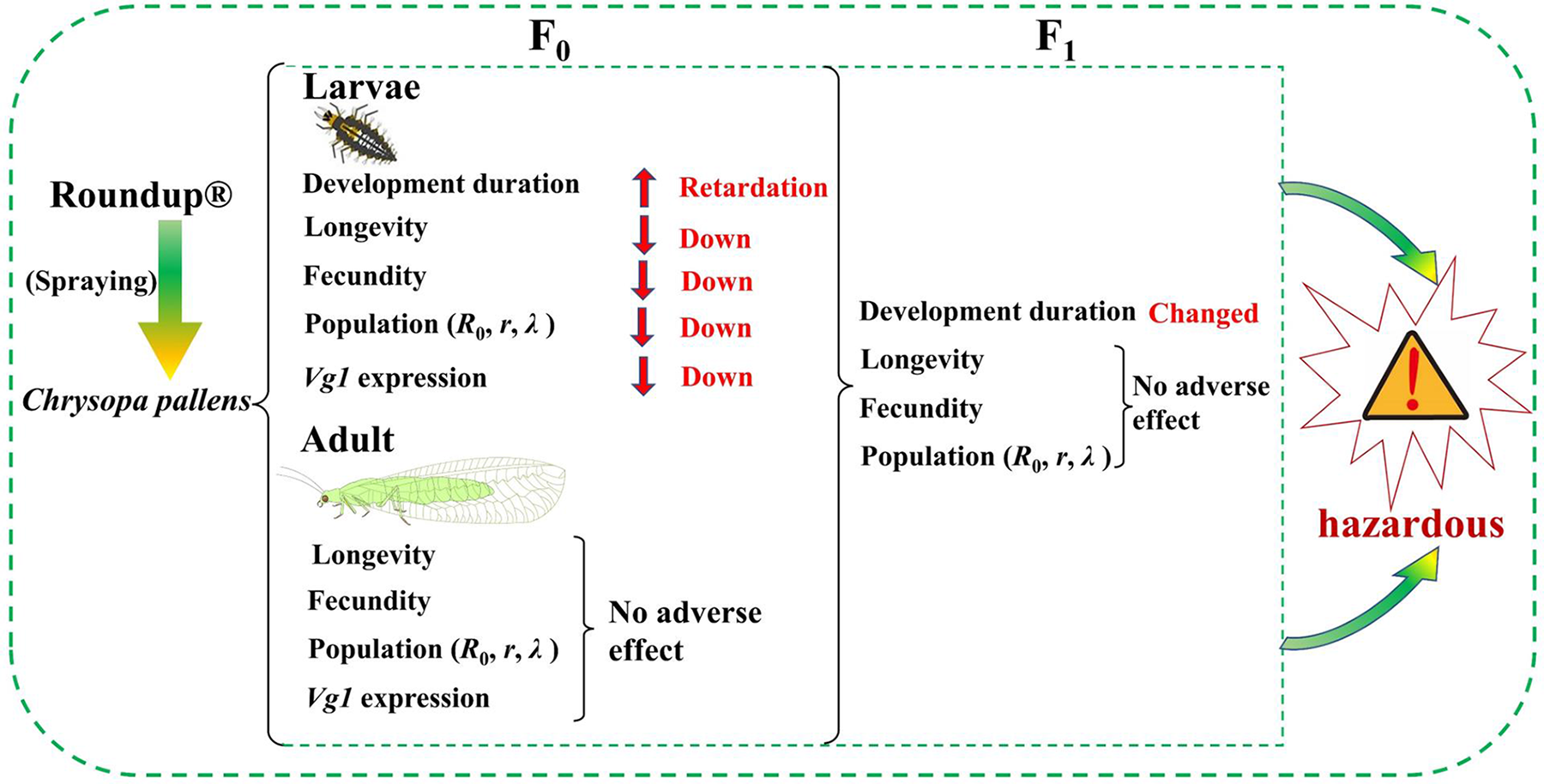No CrossRef data available.
Published online by Cambridge University Press: 07 July 2025

Glyphosate, the most prevalent pesticide and widely used herbicide globally, has seen much research on its potential ecological toxicity. Glyphosate-based herbicide (GBH) is directly sprayed in the field, exposing predators to the chemical through contaminated prey or direct contact. While the consequences of ingesting glyphosate have been explored, the specific impact of GBH spraying on Chrysopa pallens (Neuroptera: Chrysopidae) remains unclear. In this study, life tables were constructed to evaluate the potential effects of different stages of exposure to GBH on both the parents (F0) and offspring (F1) of C. pallens, and the expression of genes related to the insulin signalling pathway and vitellogenin (Vg1) was detected by reverse transcription-quantitative polymerase chain reaction. The results revealed that medium (10 mL/L) and high (20 mL/L) concentrations of GBH adversely affected the development and longevity of the F0 and F1 generation of C. pallens larvae. Notably, high concentrations of GBH significantly reduced the fecundity of the F0 and suppressed Vg1 transcription at both medium and high concentrations. While GBH treatment of C. pallens adults showed no harmful effects on the longevity, fecundity, population parameters, and the transcription levels of genes involved in insulin signalling and Vg1 in the F0. Nevertheless, it altered the developmental duration of the F1. Therefore, spraying GBH may lead to reduced fecundity and inhibit the Vg1 transcription, posing potential risks to both parental and offspring generations of C. pallens. These findings offer valuable insights into the proper utilisation of GBH.